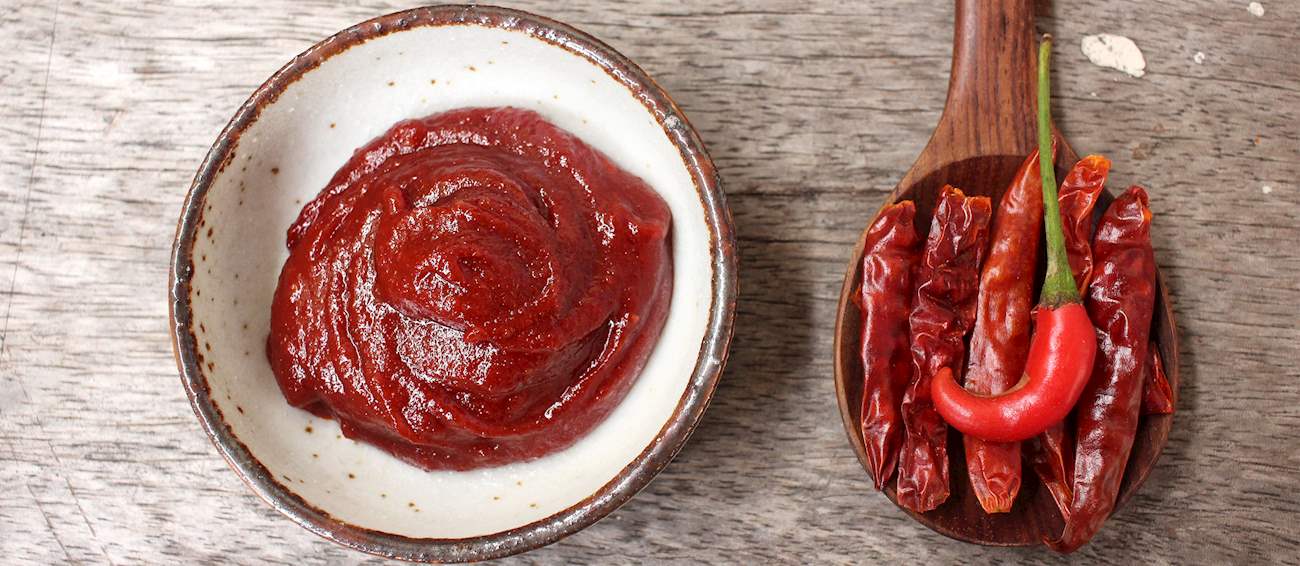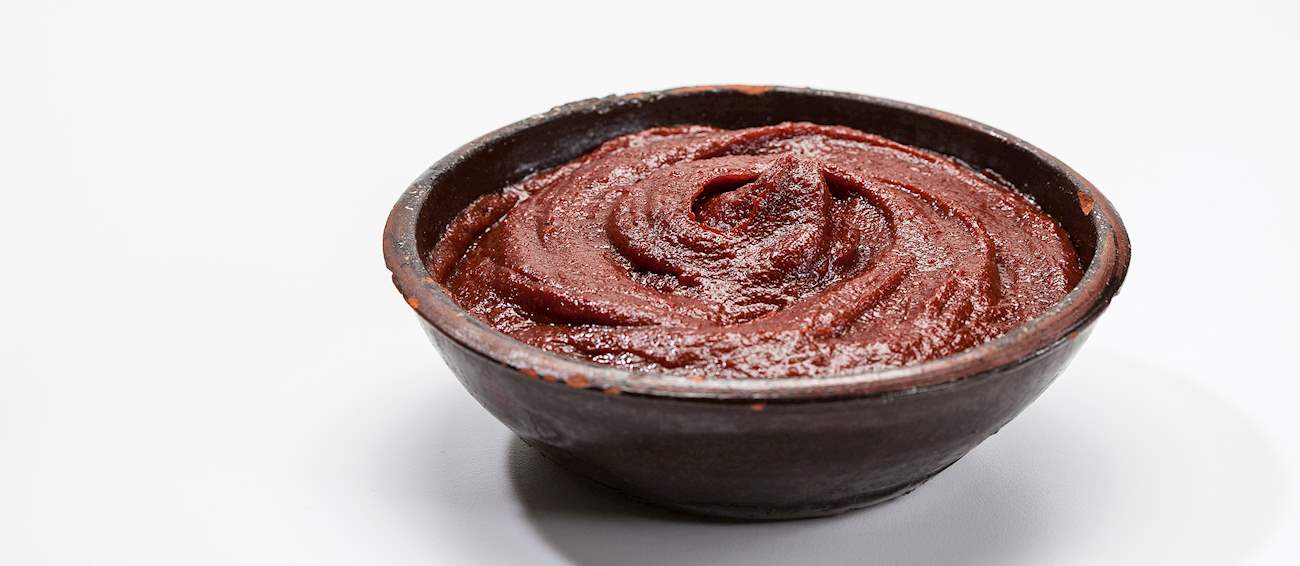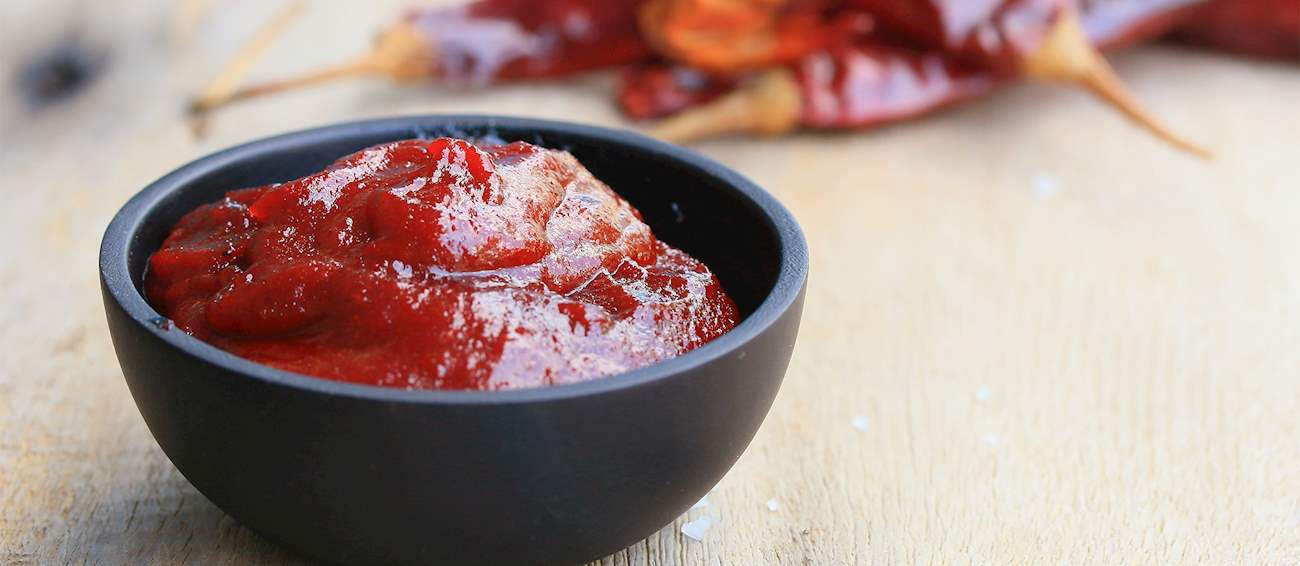Gochujang
One of the essential ingredients in South Korean cuisine is a spicy, thick, and concentrated gochujang paste. In its basic form, it is made with a combination of gochugaru (fine chili powder made from a specific type of gochu chili pepper), meju (fermented soybean powder), salt, and glutinous rice.
The combination of these fine powders is then left to ferment for several months, or even longer. Because of its popularity, many regional varieties appear throughout the country. Gochujang was first mentioned in writing in 1614, but it is believed that it existed prior to that.
The paste is used either as a condiment or a cooking ingredient in soups, stews, sauces, and marinades. The most popular dishes made with it include kimchi, budae-jjigae, bibimbap, tteokbokki, and many other. Traditionally, like other jang dishes, this spicy chili paste is fermented in onggi vessels—a type of earthenware that lets air inside and it that way allows fermentation.
Part of
Gopchang jeongol
This traditional South Korean hotpot is made with beef tripe, typically small intestines known as gopchang. The dish consists of a flavorful beef broth, gochujang ... Read more
Ssamjang
This thick and spicy paste is one of the most common dipping sauces in South Korean cuisine. It is traditionally prepared with a combination of fiery gochujang... Read more
Saengchae
Saengchae is a Korean term used to denote various salads made with sliced fresh vegetables that are coated in a spicy dressing. The most common variety of the dish is ... Read more
Hoedeopbap
Hoedeopbap is a Korean rice bowl that is topped with raw fish and slices of fresh vegetables. Although similar to the Japanese kaisendon, this Korean version ... Read more
Serve with
Bibimbap
Bibim means mixed, and bap means cooked rice, so bibimbap is literally mixed rice. The rice is combined with a variety ... Read more
Yakiniku
Yakiniku is a term denoting a Japanese technique (with Korean origins) of cooking bite-sized pieces of meat and vegetables on a table grill. It can also refer ... Read more












